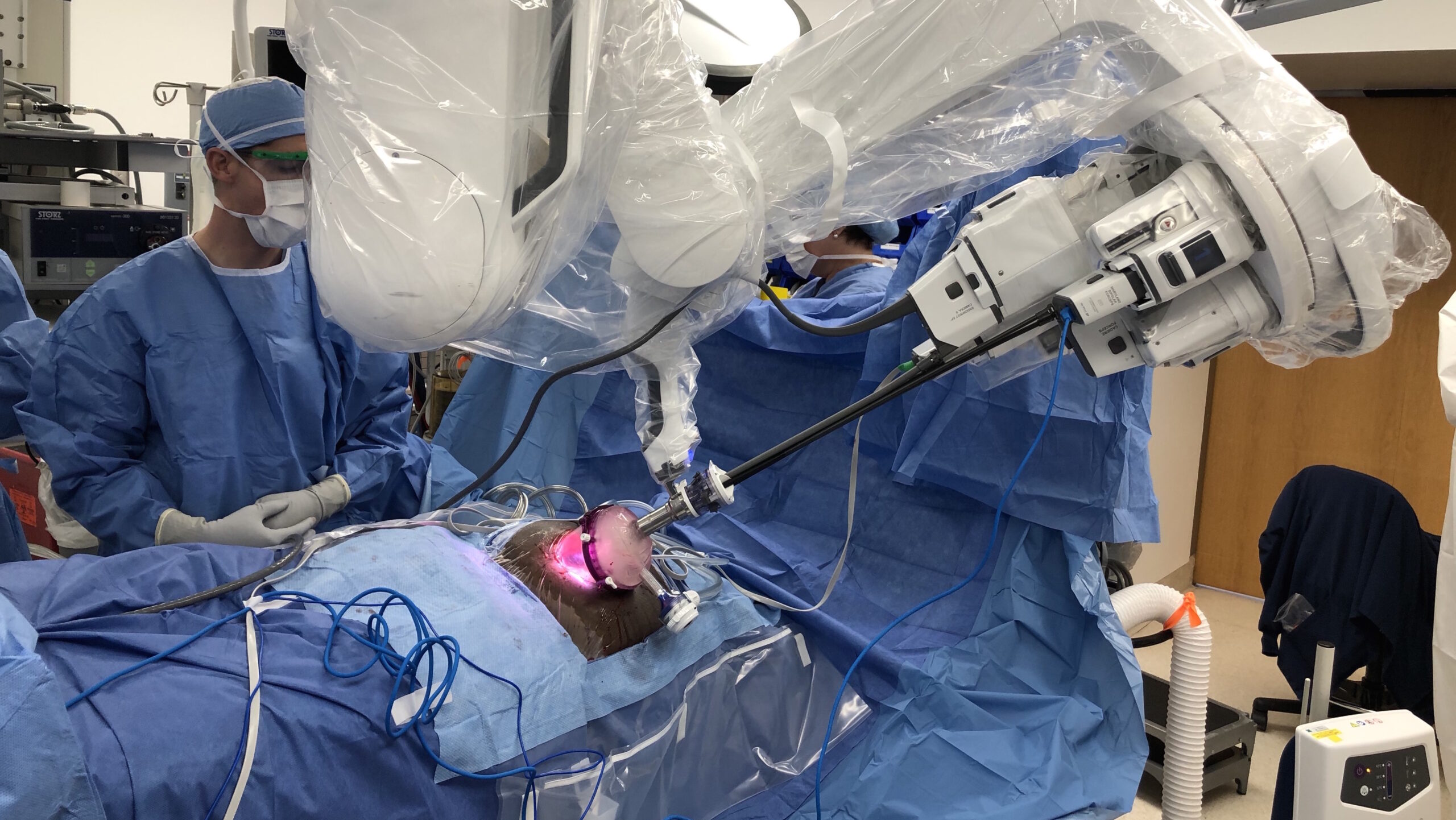Although it has become relatively common in recent years for surgeons to be aided by a robot, humans have always remained in charge of proceedings. Until now, that is.
Surgeons at Johns Hopkins University say that, for the first time ever, a robot has performed a surgical procedure without any guidance from a human.
The procedure was performed on a pig, not a human, but the breakthrough is likely to be an important milestone on the road towards autonomous robotic surgery on humans.

Robot surgeons: coming to a hospital near you?
Laparoscopic (or “keyhole”) surgery is a common, minimally invasive procedure. It involves inserting a camera inside a tube into the abdomen or a woman’s reproductive system to check for problems.
Keyhole surgery has a number of benefits over traditional, more invasive surgery, such as a reduced risk of infection and reduced pain. Patients are able to go home quicker, freeing up space in hospitals.
During the procedure at Johns Hopkins, a robot called STAR (Smart Tissue Autonomous Robot) successfully reconnected two ends of the intestine of a pig.
And what’s more, researchers says STAR performed better than real surgeons, who deviated more from the ideal cut line — resulting in more tissue damage.
“Our findings show that we can automate one of the most intricate and delicate tasks in surgery: the reconnection of two ends of an intestine. The STAR performed the procedure in four animals and it produced significantly better results than humans performing the same procedure,” says senior author Dr. Axel Krieger, a mechanical engineer at Johns Hopkins, in a university release.
The procedure performed is considered to be one of the most challenging in gastrointestinal surgery. It requires pinpoint accuracy and consistency. A small hand tremor or a misplaced stitch can result in a leak, which could have catastrophic complications for the patient.
STAR was created specifically to suture soft tissue, and is an improvement over a 2016 model created by the same team. The earlier model successfully repaired a pig’s intestines but required a larger incision and more help from humans.
STAR has an infrared camera and new features for enhanced independence and improved precision. They include special tools for suturing and scanners that provide more accurate visualizations of the surgical field.
A structural-light based 3D tube, or endoscope, and machine learning-based tracking algorithm is used to guide STAR.
You vill eat ze bugs! Scientists find new way to isolate insect protein for human consumption
Scientists at West Virginia University have found a way to isolate protein from insects, paving the way for wider direct human consumption of insect-based food in the near future.
The scientists used a new technique to isolate and determine the nutritional properties of powders made from cricket, locust and silk-worm pupae.
The consumption of insect protein is being heavily touted as one way to feed a world whose population is predicted to reach 10 billion by 2050.
But while the practice of eating terrestrial insects is widely accepted throughout most of the world, in the West few people find the prospect of eating them appetising.
Soft-tissue surgery is especially hard for robots because of its unpredictability, which forces the technology to adapt quickly to handle unexpected obstacles.
STAR has a novel control system that can adjust the surgical plan in real time, just as a human surgeon would.
“What makes the STAR special is that it is the first robotic system to plan and execute a surgical plan in soft tissue with minimal human intervention,” explains Dr. Krieger .
As the medical field moves towards more keyhole-based approaches for surgety, researchers believe it will be important to have specially designed automated robots to assist.
“Robotic anastomosis is one way to ensure that surgical tasks that require high precision and repeatability can be performed with more accuracy and precision in every patient independent of surgeon skill,” Krieger says.
“We hypothesize that this will result in a democratized surgical approach to patient care with more predictable and consistent patient outcomes.”
Dr. Krieger also believes robots will one day be performing trauma surgery on wounded soldiers, on the battlefield..


Don’t hesitate to email us at [email protected] for personalized coaching and a client questionnaire if you’d like DEDICATED tailor-made personal training on strength training, building muscle, losing fat, developing athleticism, and more — all to your liking, lifestyle, habits, and taste!
Otherwise, don’t forget to claim your FREE eBook detailing how to lose 20lb of fat while building muscle in 12 weeks! You can claim it here.
Alternatively, you can pick up a FREE eBook on fundamental strength principles offering an introductory workout program.











